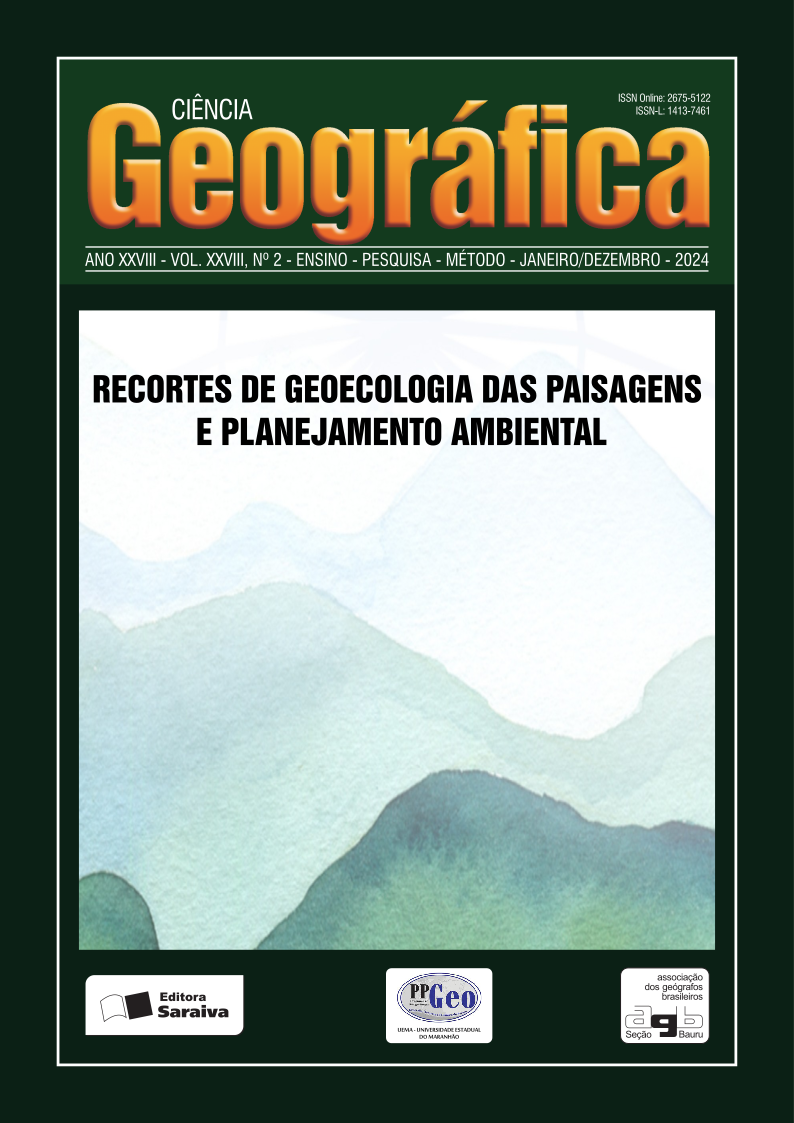La unidad de paisaje forestal amapaense: y la incidente de la deforestación claro entre los años 2001 y 2020
DOI:
https://doi.org/10.18817/26755122.28.2.2024.3865Palabras clave:
Unidades de Paisagem. Desmatamento. Amapá.Resumen
El artículo se propone analizar la evolución del patrón espacial y temporal de las transformaciones paisajísticas provocadas por la Deforestación Rara en las más de 10,7 millones de hectáreas que conforman la Unidad de Paisaje Forestal Amapaense. El objetivo general es analizar el patrón espacial y temporal de las transformaciones del paisaje debido a la Deforestación por Raza en la Unidad Forestal del Estado de Amapá entre los años 2001 y 2020. Las específicas fueron: a) Mapear las áreas transformadas por la Deforestación por Raza entre 2001 y 2020; b) Analizar el patrón espacial y temporal de la Deforestación por Raza entre los años 2001 y 2020. La categoría geográfica utilizada para desarrollar la investigación fue paisaje ya que es desde allí que es posible observar la evolución multitemporal. Se utilizaron datos de Deforestación Clearcut obtenidos de la plataforma PRODES/INPE y también de la base de datos MapBiomas, que cuenta con un módulo sobre Deforestación. Los datos fueron organizados y superpuestos en el límite estatal y la Unidad de Paisaje Forestal utilizando como herramienta el software TerraView. Se puede comprobar que la tasa de Deforestación por Corta Rasa en la Unidad de Paisaje Forestal Amapaense entre los años 2001 y 2020 fue del 0,89%, representando alrededor de 100 mil hectáreas y un promedio anual de 5 mil hectáreas/año.


